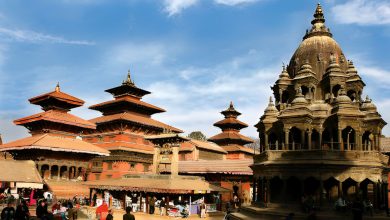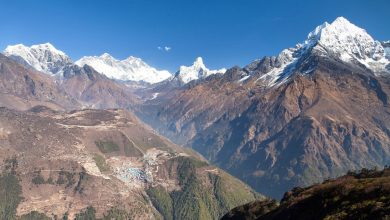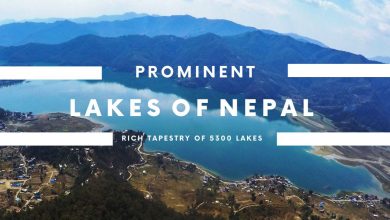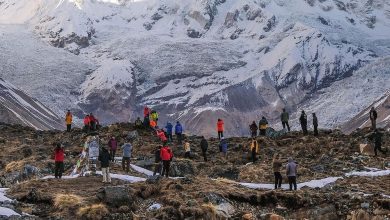Gokyo Weather and Temperature
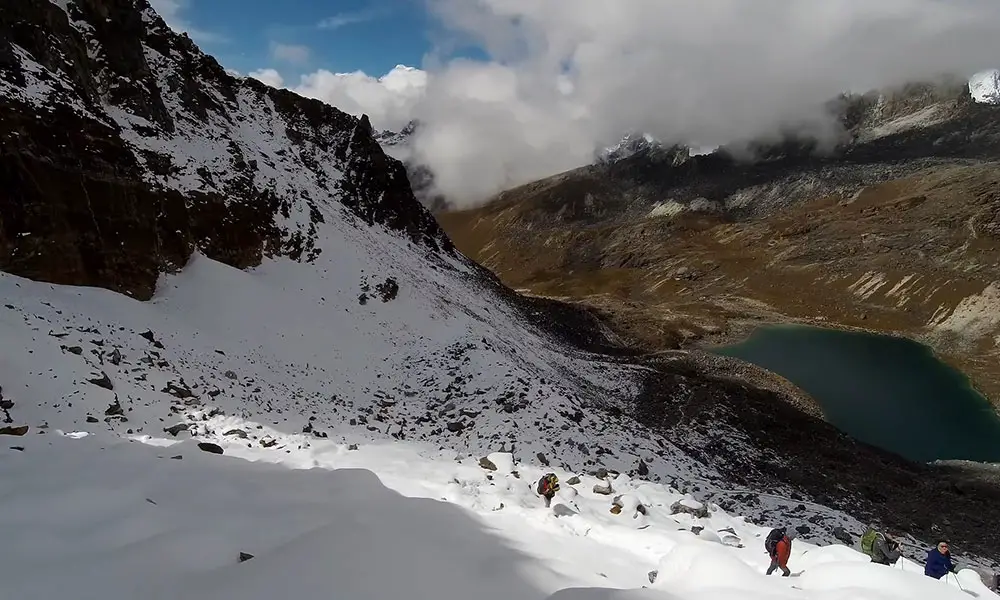
Nepal – the home of trekkers and inspiration to nature lovers. It’s the land of wonders with divine beauty and marvels like Mount Everest. It has some hidden, and some much-known travel escapes for visitors.
Gokyo Lake is one of Nepal’s best-kept secrets and probably the coolest; in the eminence of Everest Base Camp, Gokyo has been a low-key fling. But trekkers have realized how incredible it is over the years.
Gokyo has everything, from soaring mountains to steep ice cliffs and turquoise lakes. Its diverse landscapes, picturesque valleys, and rolling hills are not to play with. Also, not to mess with is its changing weather, sometimes creating trouble for visitors.
Gokyo Trekking Season in Nepal
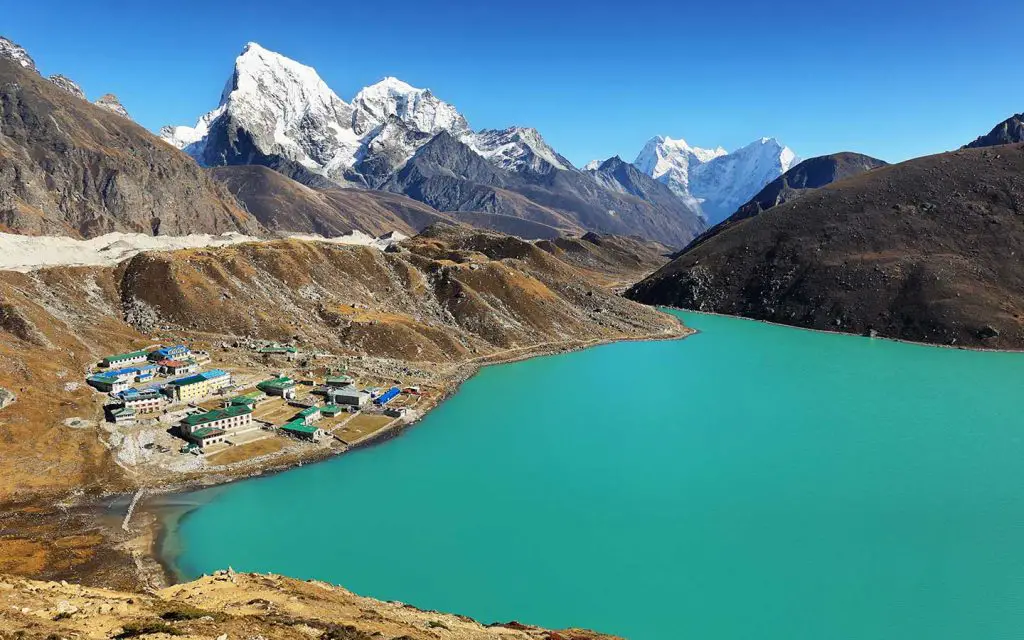
Gokyo has four seasons: cool, calm falls; warm, sunny springs; hot, humid summers; and cold, snowy winters. However, summers are unusual to be extremely hot in the mountains. The temperature can go as high as 4 degrees Celsius, while the lowest hovers below freezing. There’s frequent rainfall from mid-June to early August, which makes the trail murky.
Winters are generally cold at Gokyo, with temperatures dropping up to -18 Degree Celsius. The area receives quite a bit of snow with wind storms, which can disrupt the excursion. Also, the trails covered in fresh snow make the hike difficult without crampons.
Its aftereffect can be witnessed till early spring as the weather stays frigid. Even in March, Gokyo experiences cold weather and snow, but it isn’t more than a few inches above the soil. Temperatures start increasing in April and reach their highest in May at 0.8 degrees Celsius.
Gokyo shines in spring with longer days and bright sunshine. It offers spring flowers with lush green fields to visitors. The clear skies make it easier for visitors to capture the perfect shot of Gokyo Ri and its nearby mountains.
Like Spring, Autumn too has beautiful weather, but with less humidity. The season is unlike anything, with a crisp and cool climate. The weather can be a bit hot initially, but as time flies, it gets colder.
The temperature steadily falls throughout Autumn and reaches a minimum of 9.8 Degrees Fahrenheit. The weather keeps fluctuating but not as much as in the winter. Days are pretty warm in Spring, so hiking becomes easier.
Spring Season
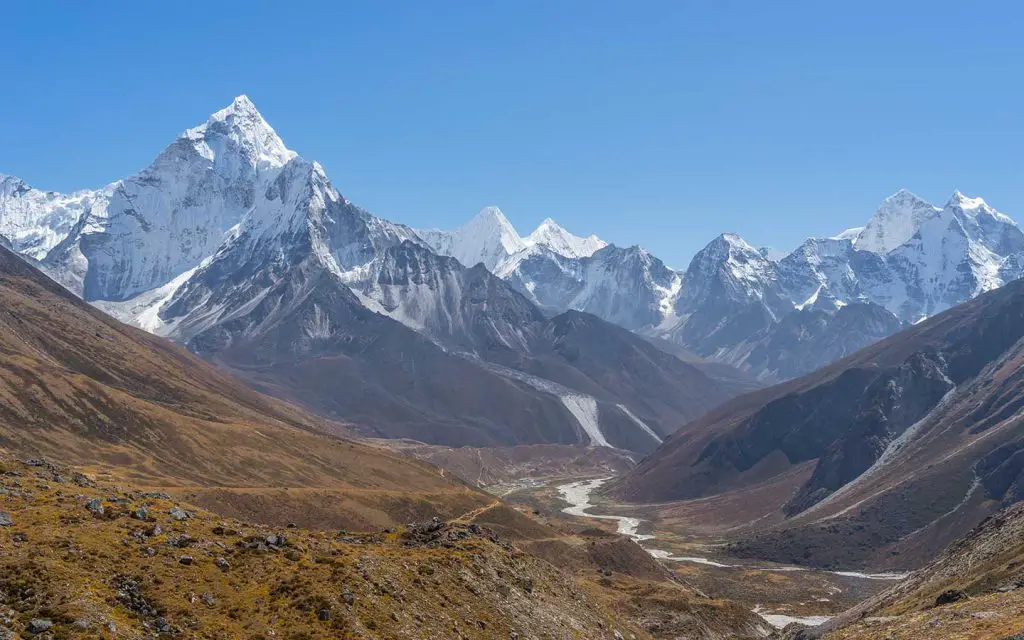
Spring is a lovely time to visit Gokyo. It has pleasant weather and an atmosphere that goes quite well. The climate in spring promotes outdoor events and adventure. It has a mix of hot and cold weather somewhere between summer and winter.
The weather is mildly warm, with sunny days and chilly nights. Early spring feels pretty cold in the Gokyo, but things start to heat up by late spring. The change in weather can be witnessed from the beginning of April as temperatures rise.
The region gets approximately 20 inches of precipitation in April. The area hardly sees any rainfall, but travelers may experience light snowfall in the early season. Spring brings the possibility for severe weather, including high winds and storms at the end of May.
The average temperature in Spring ranges from -2.6 degrees Celsius to -11.5 degrees Celsius. So, trekking in March could be a challenge for many hikers. But, not to be disappointed as its incredible view makes up for the harsh weather.
As spring approaches, forests start turning green. Spring flowers are in bloom along the trail and into the woods. The increasing temperature and clearer skies make catching glimpses of mountains and landscapes easier.
Gokyo emerges from its snow shell as the weather begins to warm up. Bird watching becomes a thing during the trek, especially with new species migrating to the forest. Animals come from their shelter and provide glimpses to the visitors.
Autumn Season
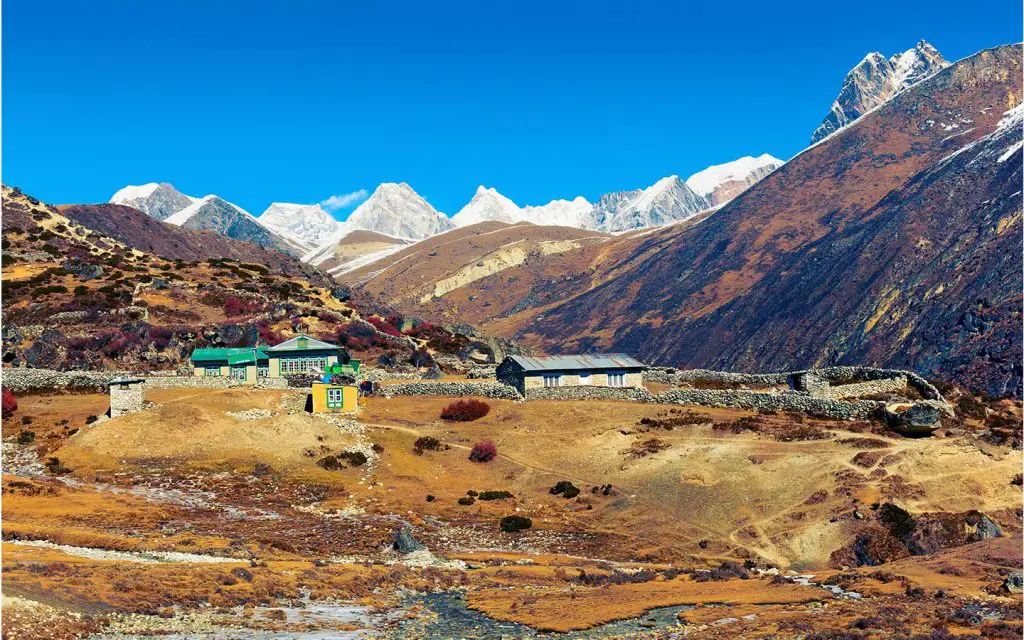
Autumn welcomes visitors on a grand scale. It delights them with fine weather, a mix of hot and cold. Visitors can expect a temperate climate with low humidity throughout the season.
Early Autumn is usually hot, with temperatures increasing to 2.9 Degrees Celsius.
The weather is mildly similar to spring, except it has a summer vibe at the beginning of the season. It has bright and warm days full of sunshine. However, the nights in Gokyo are crisp and chilly.
The temperature starts cooling from mid-October and becomes cold by the season’s end. Rains are less frequent in Gokyo, but visitors occasionally face wind storms and snowfalls.
The temperature keeps falling from the start of November and reaches -12 Degree Celsius by the end of the month. Days are shorter in Autumn, which may be problematic for hikers since they have to move fast on the trail.
The changing tree leaves and spectacular fall colors are the highlights of Gokyo Trek in Autumn. It keeps the trekkers busy throughout the walk and provides them with a magnificent view of the picture taken.
Autumn is a prime festival season in Gokyo. It has some of the biggest events and annual festivals falling in October. Hence, it’s common for visitors to be more informed about the culture and traditions of the Himalayan people in Gokyo Valley.
Winter Season
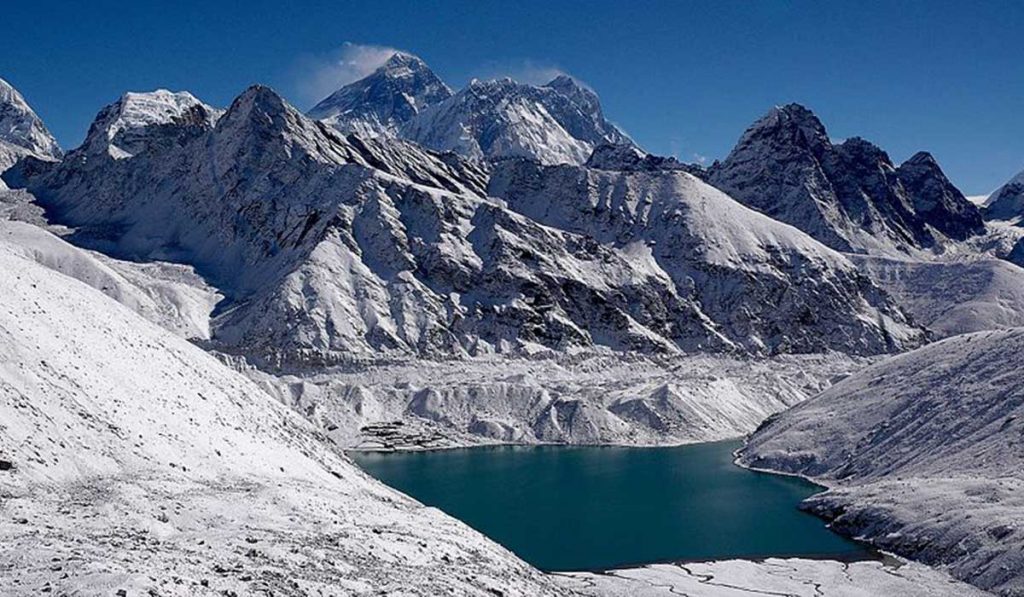
Winters in Gokyo are cold, damp, and wet. It’s frigid in the valley, with temperatures dropping below -18 Degree Celsius. Winter months have typical cold mornings and nights, but their days can be warmer and sunny.
The season brings heavy snow and ice but keeps the crowd away. Because winter weather changes a lot, outdoor activities like hiking have become less popular. Travelers start losing interest due to extreme weather, which causes the trails to be less busy.
Gokyo receives approximately 29 inches of precipitation in winter. December has the lowest humidity at 33 percent, so watch out, or you might get scratchy throats, dry skin, and chapping. It’s hard to get a lot of sunny days at the heart of winter, but the weather does get better by the season’s end.
Suppose you don’t like cold; better hike in pre-season or post. The weather is slightly warmer then, so you can enjoy the walk. With spring knocking on the door, temperatures start increasing from February.
High temperature is generally between -1 and 0 degrees Celsius. They have long nights with frequent snowfall and blizzards. Therefore, visitors wil have to be extra careful while hiking Gokyo in winter, especially at the season’s peak.
Compared to other seasons, they must be more prepared in winter. Everything has to be carefully selected, from warm clothes to trekking equipment like crampons. They’ll also have to make bookings of rooms as many accommodations are out of service in winter.
Since the valley is less crowded, especially in January, trekkers can get reasonably priced accommodation. They might even end up getting discounts and other huge deals. But on the other hand, they also have to deal with snowy, moist, and slippery paths.
Walking on the trail in the cold can be difficult for hikers. But the stunning scenery, shimmering mountains, and the frozen lake will keep them occupied. The dusting of fresh snow on the rooftop of houses provides a breathtaking view to the visitors. It’ll be hard for visitors to see a lot of wild animals on their way, but they may witness a few of them.
Summer & Monsoon Season
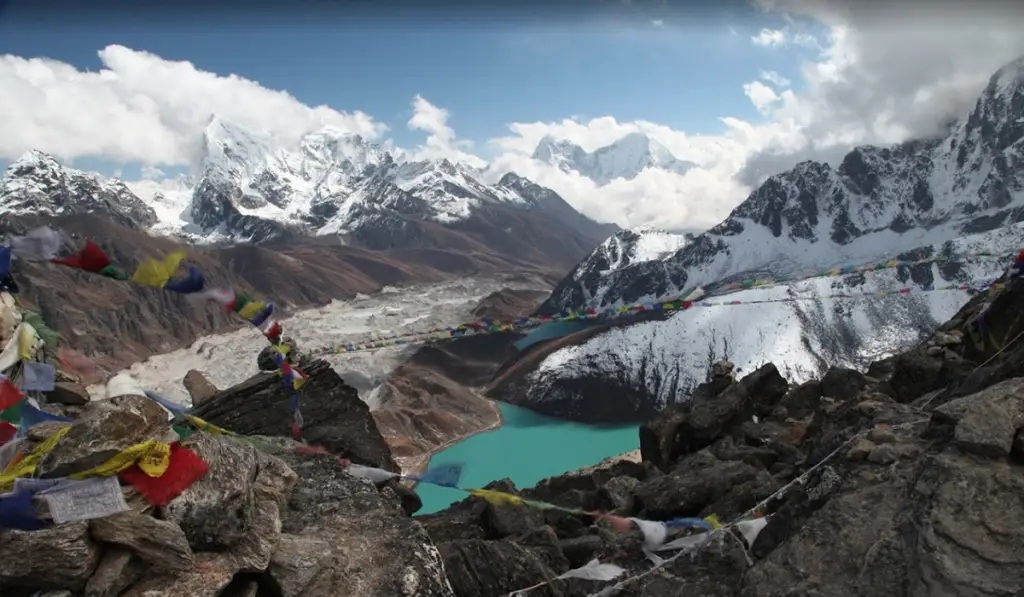
Summer in Gokyo is hot and humid. But it isn’t sweltering, with temperatures between 1.5 and 2.2 Degrees Celsius. Mornings and evenings are particularly cold, but the days are warm and sunny.
July and August is generally the hottest time of the year, with temperatures increasing up to 4.4 Degree Celsius. These months also receive the highest rainfall, along with 94 percent humidity. Tropical storms and lightning are frequent during the season, so be aware of the possible weather changes.
At the peak of summer, trekkers can expect the sun to stay around for 6.3 hours daily. But it’s only up for about 3.3 to 3.5 hours in the coming months. Trekkers will encounter many cloudy days at this time of the year, making sightseeing a bittersweet experience.
Due to frequent storms and rainfall, hiking Gokyo can be super tough in summer. The foggy weather affects visibility during long-haul treks. It also makes the trails greasy, so ensure you have waterproof hiking boots that don’t slip on muddy terrains.
The summer weather is hot and dry in Khumbu, so watch out if you’re susceptible to sunburn and dehydration. Those who can’t handle excessive heat and temperature will be better off wearing a sunhat and sunscreen.
If you’re traveling mid-July or August, pack light clothes with sunglasses and a sunhat. Both long and short sleeve shirts will be fine to prevent rashes and sunburn. You’ll want to carry some moisturizers and flasks for a better water supply.
You may also like:
